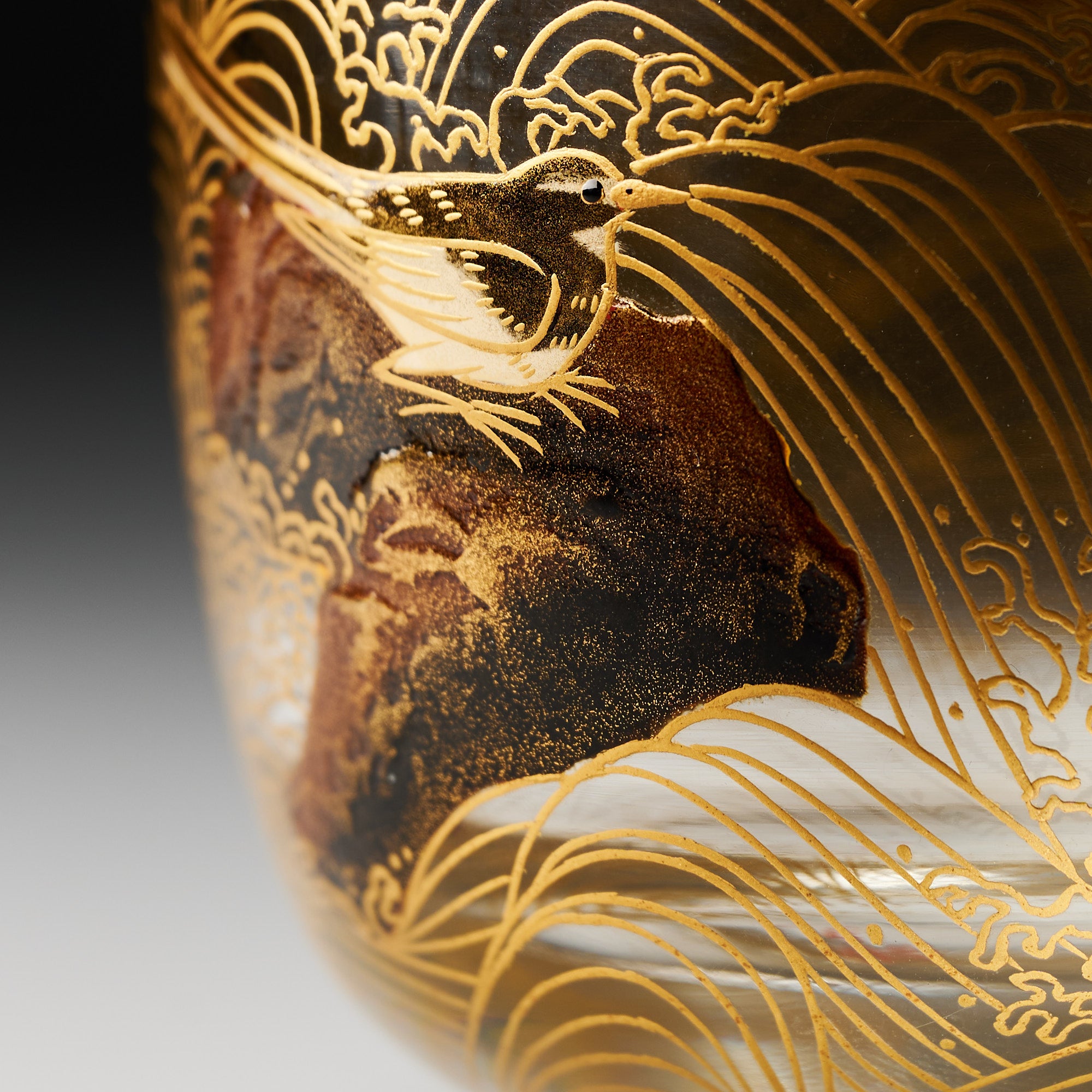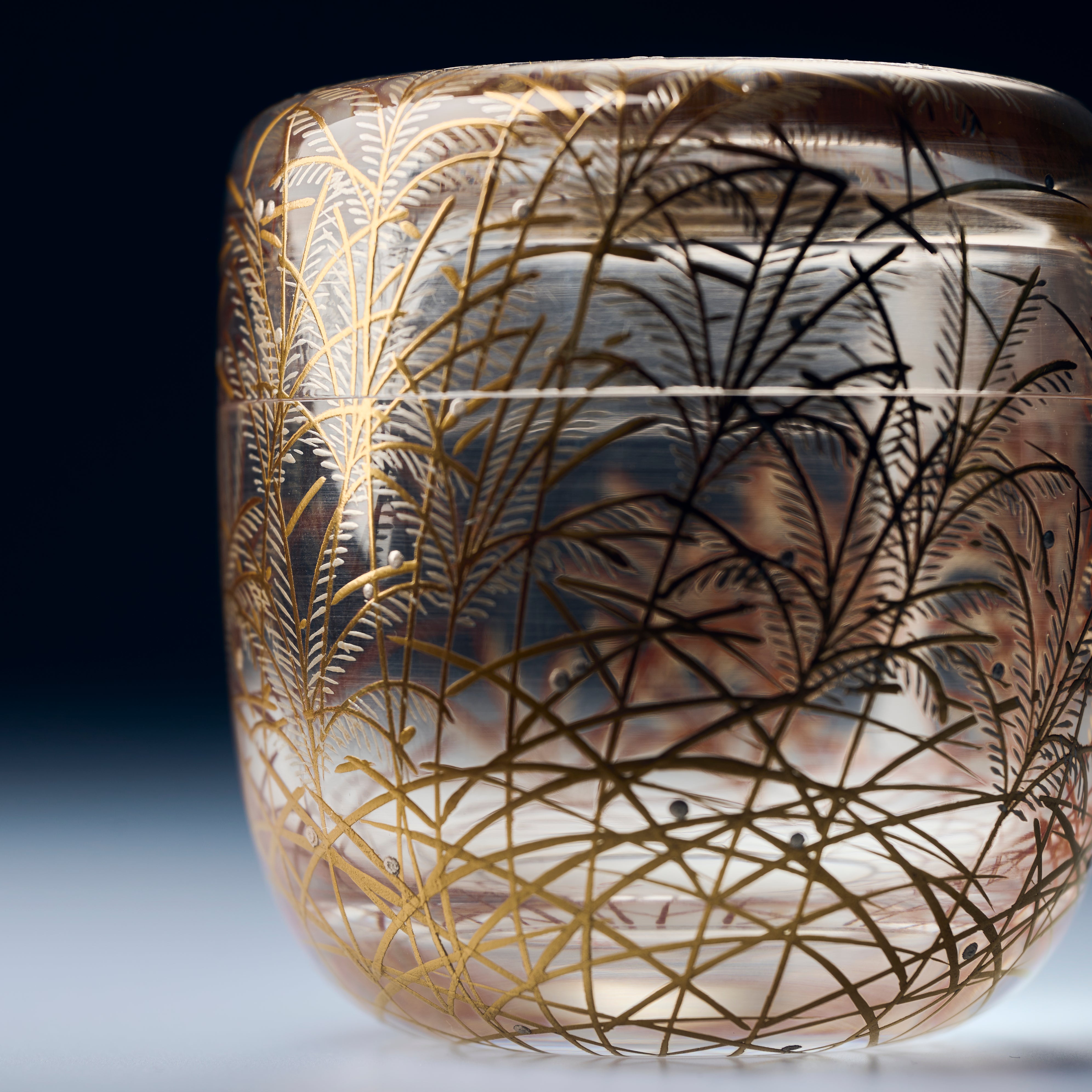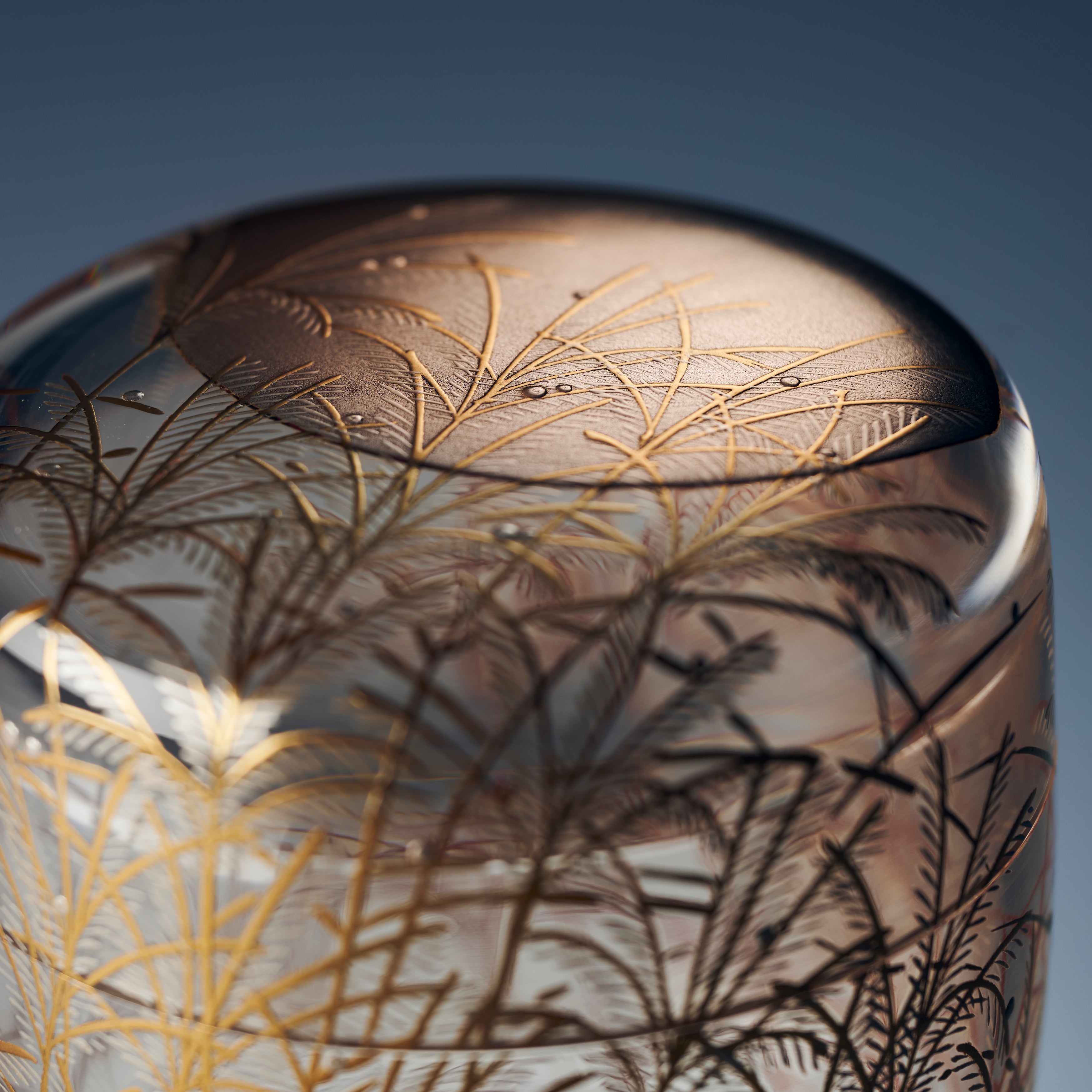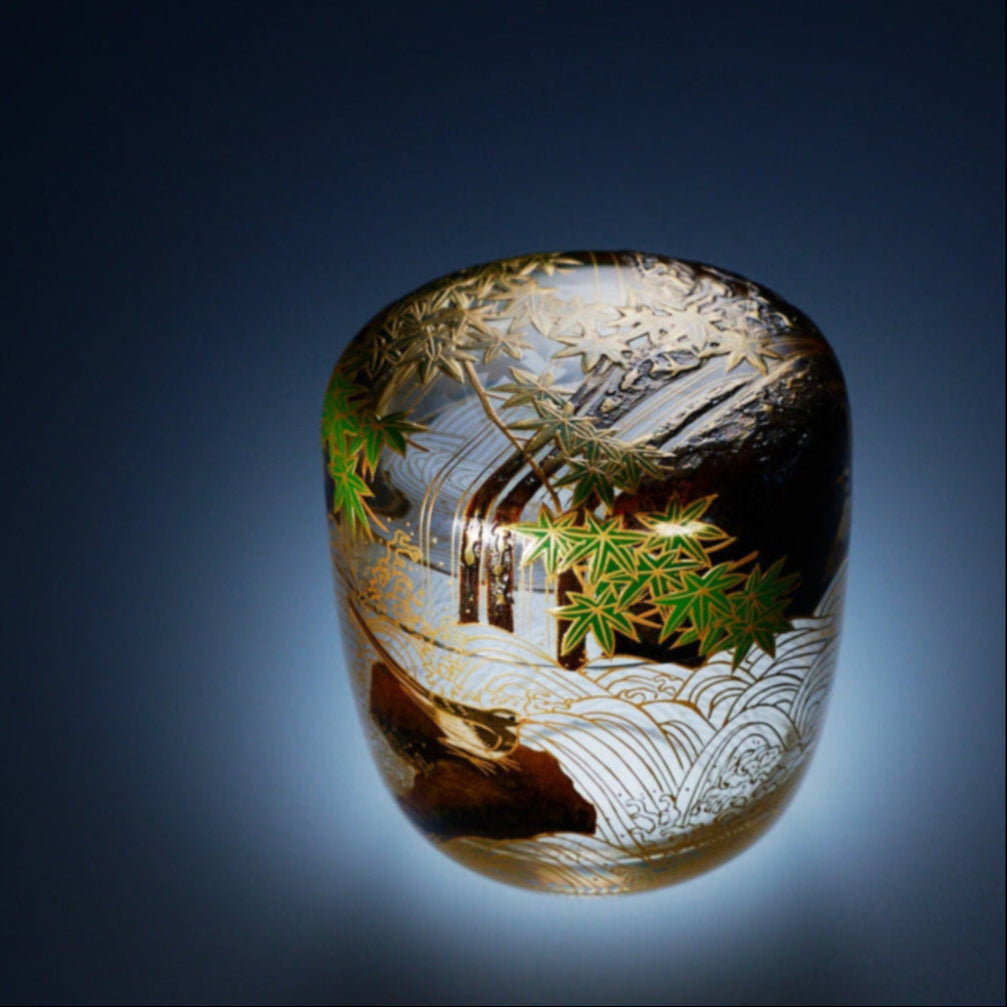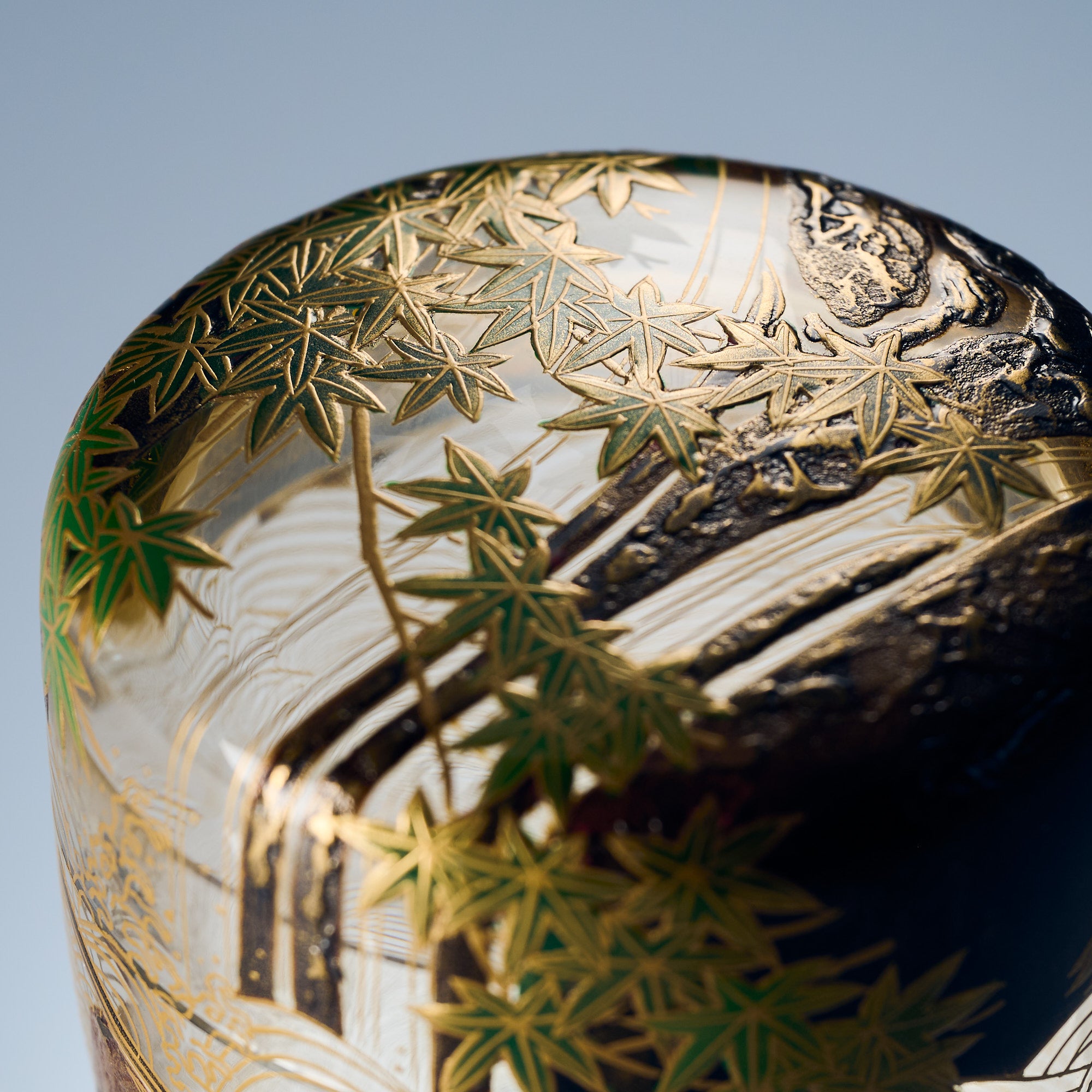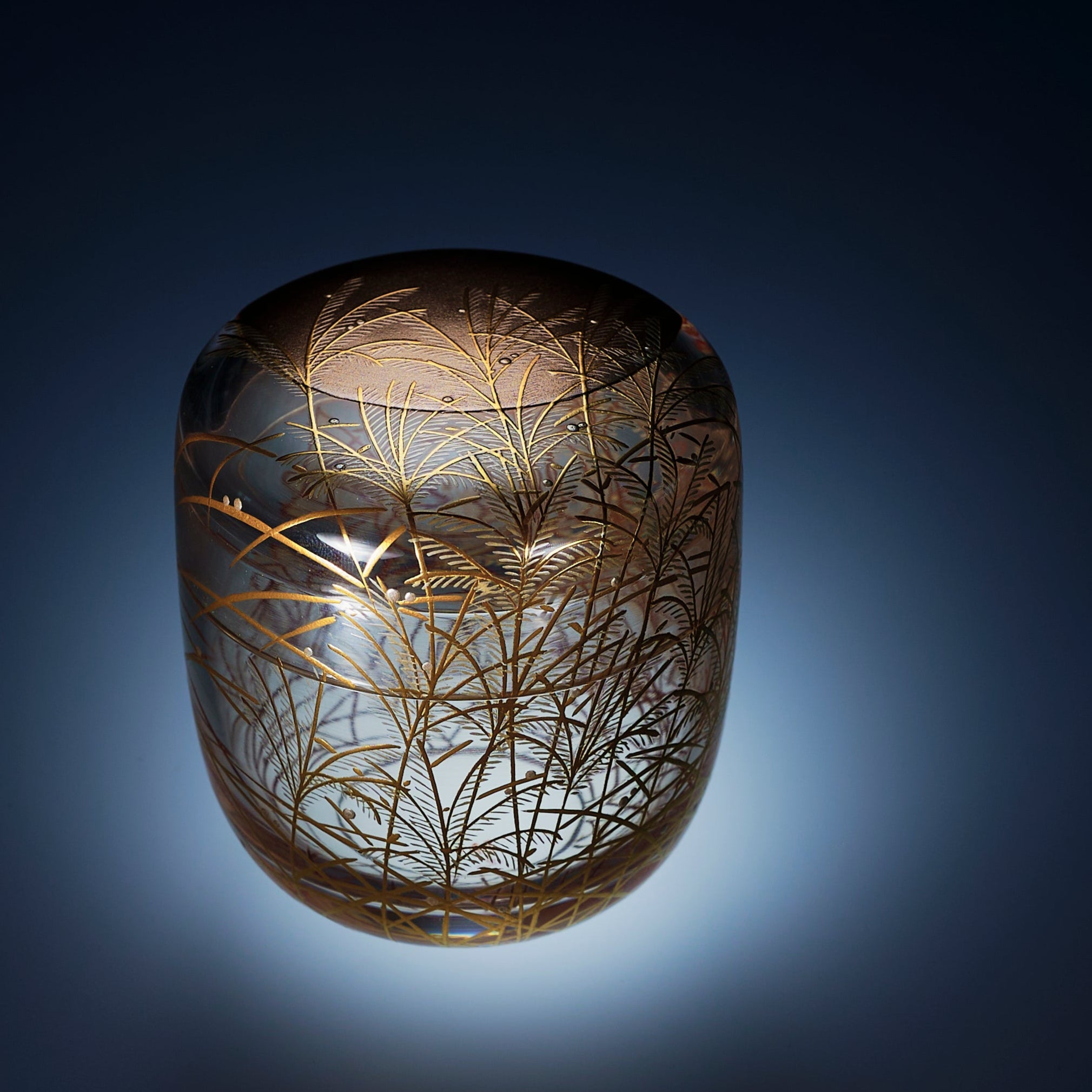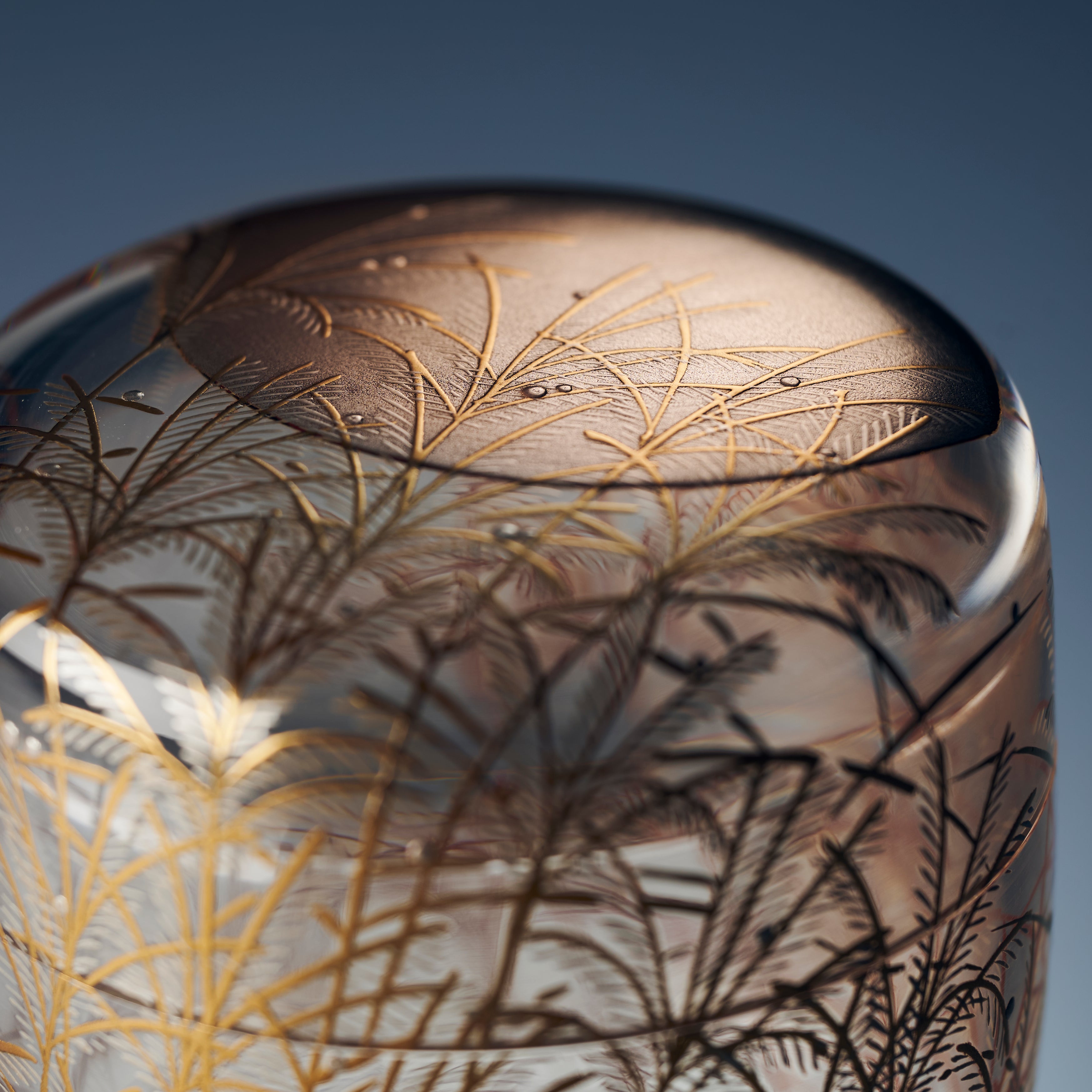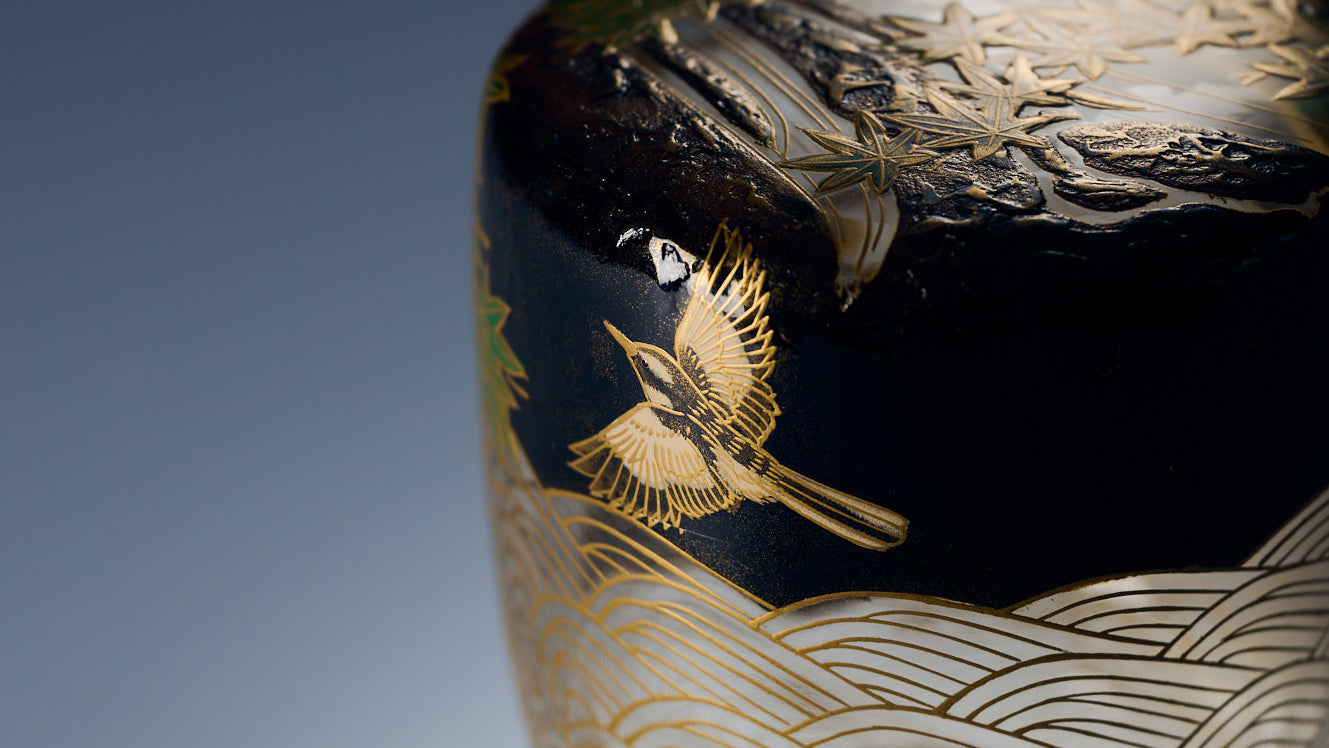
Translucent Worlds of Maki-e
Hariya Masayuki
Hariya Masayuki is a maki-e artist specializing in Yamanaka lacquerware. Raised in a family of artisans, Hariya grew up surrounded by the tools and materials of the trade. This environment gave him an early and intimate familiarity with the world of craftsmanship. In his late teens, he encountered the works of Japan’s designated Holders of Important Intangible Cultural Heritage, such as Matsuda Gonroku and Terai Naoji, at a museum in Kanazawa Prefecture, an experience that sparked his lifelong fascination with maki-e.
Hariya faithfully preserves traditional techniques, while also incorporating modern materials and ideas. In doing so, he expands lacquer art beyond its conventional boundaries and opens up new creative possibilities.
Innovation Rooted in Tradition
Hariya marries time-honored maki-e methods with deliberate, thoughtful composition. While his practice is rooted in tradition, it is never constrained by it. As his work shows, he adapts these classical methods to acrylic, constantly exploring new possibilities for lacquer art.
His bold explorations breathe vitality into each piece. With the finest brushstrokes paired with highly expressive skills, he allows a sense of brilliance to flow across the transparent surface. The result is an art form that feels both delicate and radiant, an interplay of control and spontaneity where tradition and innovation meet. Each work seems to shimmer with its own quiet energy, inviting the viewer to pause and discover deeper layers of beauty.
The Dual Expressions of Maki-e
The acrylic tea container featured here reveals different expressions depending on whether they are viewed from the outside or the inside.
For example, Silver Grass under the Moon Natsume Matcha Container. From the outside, a silver moon appears to float in the night sky, but when seen from the underside of the lid, a golden moon emerges. On the pampas grass, specks of silver powder evoke the sparkle of morning dew, creating a dimensional and dreamlike atmosphere. Speaking of this work, Hariya notes that he sought to capture “a fantastical mood, as if the moon were shimmering in the middle of the night.”
Another piece, Wagtails at the Waterfall Natsume Matcha Container, conveys a similar duality. It depicts a summer landscape of Japan, where a waterfall cascades between verdant maple leaves, evoking a sense of coolness and clarity. Viewed from the outside, the scene is rendered in deep, natural tones, while the inner side of the lid bursts into vivid colors, as if illuminated by light itself.
These acrylic tea caddies offer a fresh impression unlike traditional lacquerware, presenting a new landscape each time they are held in one’s hands.
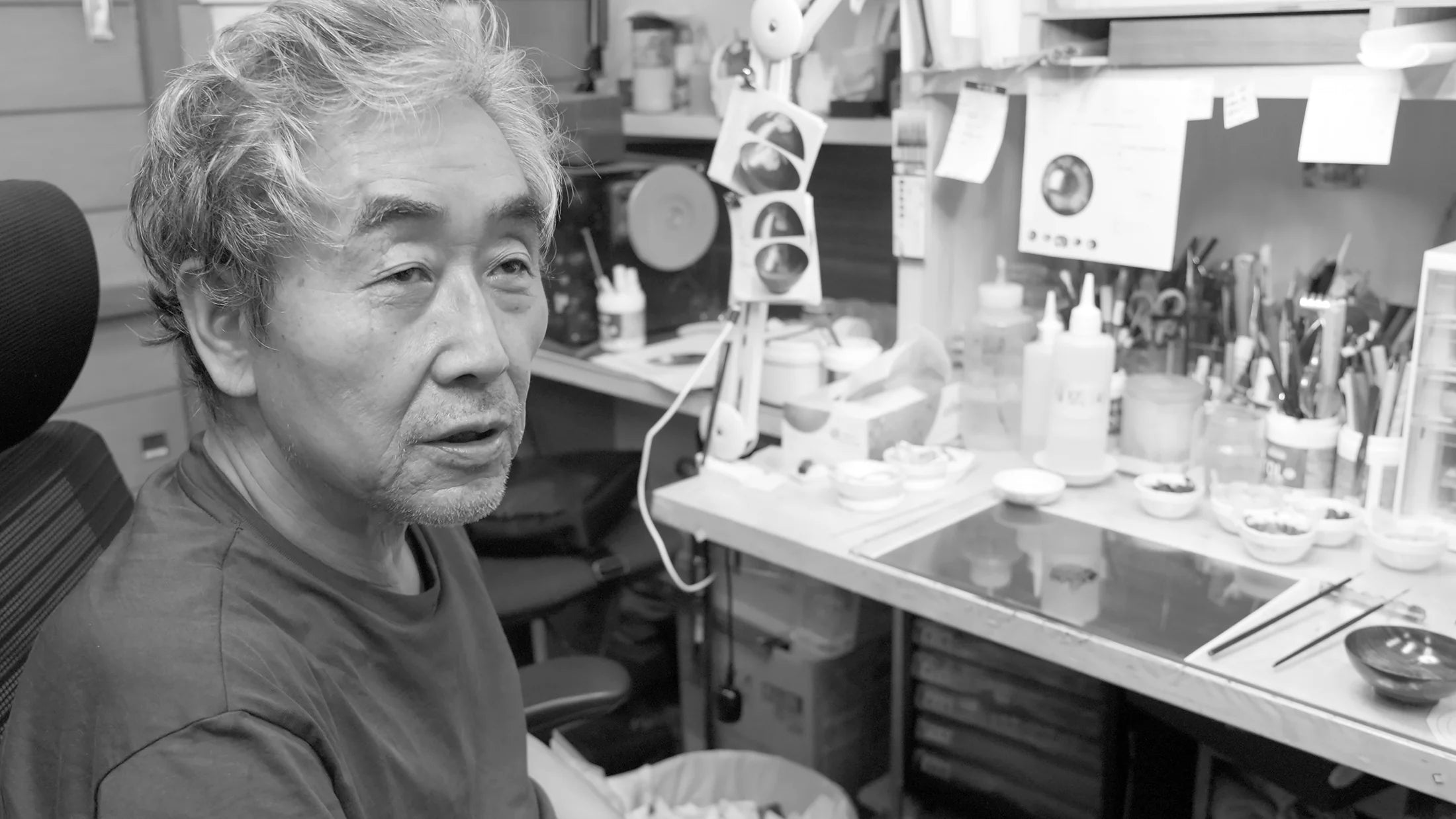
Biography
Hariya Masayuki is a maki-e artist based in Ishikawa Prefecture. He is a certified Traditional Craftsman in the decorative division of Yamanaka lacquerware, a full member of the Japan Kogei Association’s Lacquerware Section. Currently, he serves as the president of the Association of Yamanaka Lacquerware Traditional Craftsmen. In 2016, he received the Prime Minister’s Award at the National Traditional Crafts Competition. In 2024, he was awarded the Order of the Sacred Treasure, Silver Rays, by the Japanese Cabinet Office.
His work spans a wide range of lacquerware, including tea utensils such as natsume and incense containers, as well as writing boxes, small cases, and even fountain pens. He is particularly renowned for his mastery of traditional motifs, including flowers, birds, and classical patterns.
While faithfully inheriting the techniques of classical maki-e, Hariya is also dedicated to developing methods uniquely his own. Through daily practice and refinement, he strives to expand the possibilities of this time-honored art.


